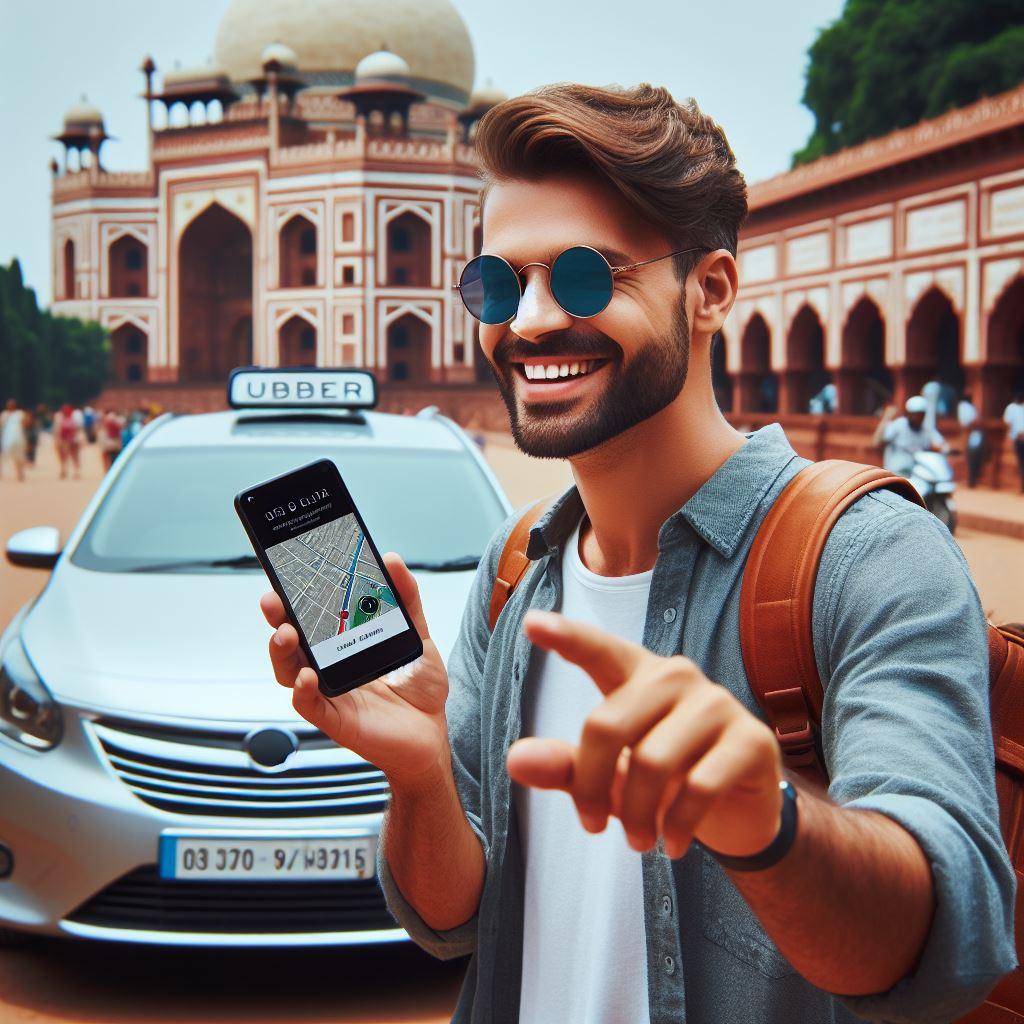Traveling in India means navigating a vibrant but sometimes chaotic transport scene. Taxis, autos (three-wheeled rickshaws), and ride-hailing apps like Uber, Ola, and Rapido are your main options for getting around cities. This guide helps you save money, stay safe, and make the most of your trips. We’ll cover practical tips, common pitfalls, and insider insights to help you move efficiently without getting ripped off.
Mastering Ride-Hailing Apps (Uber, Ola, Rapido)
These apps are a game-changer for reliability and transparency in India. Download them before you arrive—Ola and Rapido are especially popular locally, while Uber works well in major cities.
- Use Fare Estimates as Your Baseline: Before hailing a traditional taxi or auto, open the app to check the estimated distance and fare for your route. This gives you a realistic benchmark. For example, a 10 km ride in Delhi might cost around ₹200-300 via app, so aim for that when negotiating offline. Add this to your toolkit for airport transfers too, where overcharging is common.
- Opt for Cash Payments When Possible: Many drivers prefer cash to skip app fees or delays in payouts. If the option is available in the app, select it to build goodwill—it might even lead to smoother rides or local tips from the driver.
- Handle Driver Cancellations Smartly: If the driver takes longer than 5-10 minutes to arrive, cancel and rebook. Some drivers game the system by delaying to trigger surge pricing or earn cancellation fees. To minimize this, book during off-peak hours (avoid 8-10 AM and 5-8 PM in big cities like Mumbai or Bangalore, when traffic peaks).
- Beware of Off-App Deals: Drivers might ask to cancel the app booking and go direct for the same fare. This skips app safety features like GPS tracking and insurance. Unless you’re in a real hurry (e.g., late-night airport run), say no and book another ride. It’s worth the wait for peace of mind, especially if you’re traveling solo.
Added Insight: For women or first-time travelers, enable safety features like sharing your ride location with a contact. In cities like Kolkata or Chennai, Rapido’s bike options can be faster in traffic but check helmet availability and weather conditions.
Hailing Traditional Taxis and Autos on the Street
Street hailing is adventurous and often cheaper, but it requires negotiation skills. Autos are ubiquitous in most cities, while yellow-black taxis dominate in places like Mumbai.
- Negotiate Effectively: Start by telling the driver your destination and mention you know the approximate distance (from Google Maps or an app). Ask for the fare upfront. Bargain firmly—target 10% above the app estimate normally, or up to 20% during peak hours or festivals like Diwali when demand spikes. If they won’t budge, walk away and flag another; there’s always more around.
- Metered Fares: Proceed with Caution: In theory, many taxis and autos have meters, but rigged ones or detours to rack up charges are common. Mumbai is a standout—most black-and-yellow taxis stick to honest meters. Elsewhere, like Delhi or Bangalore, insist on the meter but cross-check with your phone’s GPS to spot unnecessary loops.
- Street Hailing vs. Taxi Stands: Skip stands at airports, stations, or hotels—they charge premium rates. Hailing on the street usually gets you better deals, as drivers compete more. At busy spots like New Delhi Railway Station, walk a block away to avoid the crowds and inflated prices.
Added Insight: Language can be a barrier—use simple Hindi phrases like “Kitna lagega?” (How much?) or apps like Google Translate. For safety, note the vehicle’s number plate and share it with someone. In southern cities like Hyderabad, electric autos are emerging as eco-friendly, quieter options—ask for “EV auto” if available.
Exploring Public Transport: City Buses and Beyond
For budget travelers, buses are a steal—often ₹10-50 per ride—and a great way to experience local life.
- Leverage Google Maps for Planning: It’s the best tool for bus routes, timetables, and stops in cities like Delhi, Mumbai, Bangalore, and Chennai. Enter your start and end points, select the bus option, and it shows real-time info where available. Factor in extra time for crowds and traffic—buses can be packed during rush hours.
Added Insight: Combine buses with metros for efficiency. Delhi’s Metro is world-class and connects seamlessly with buses; get a Delhi Metro card for easy transfers. In smaller cities like Jaipur, state-run buses are reliable for inter-city trips—check apps like RedBus for bookings. Always carry small change, as exact fare is often required, and download offline maps in case of spotty internet.
General Tips for Smooth Travels
- Patience and Politeness Pay Off: A smile and calm attitude go far when negotiating or resolving app glitches. Indians value respect, so starting with “Bhaiya” (brother) for male drivers can soften the interaction.
- Airport and Station Prepaid Options: At major airports (e.g., Mumbai’s Chhatrapati Shivaji or Delhi’s Indira Gandhi), use prepaid taxi booths inside the terminal. Pay upfront for a fixed fare—it’s hassle-free and avoids haggling, though slightly pricier.
- Traffic and Timing Insights: India’s traffic is legendary—plan for delays, especially in monsoon season (June-September) when roads flood. Use apps to check live traffic; early mornings or late nights are often smoother.
- Sustainability Angle: If you’re eco-conscious, prioritize apps with electric vehicle options (Ola and Uber have them in select cities) or walkable routes via Google Maps.
By following these strategies, you’ll navigate India’s transport like a pro, saving money and gaining authentic experiences. Safe travels—India’s streets are full of surprises!
Categories :


